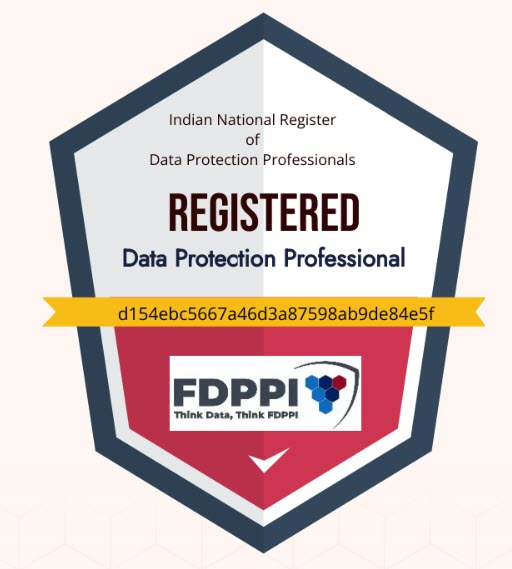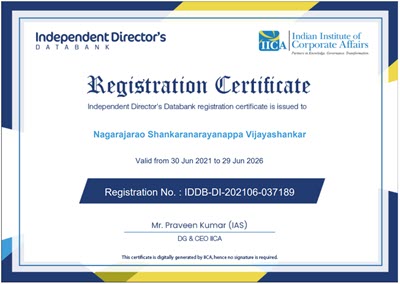In its judgement on Shreya Singhal Vs the Union of India, the two member bench of the Supreme Court has accused that the Section 66A of ITA 2008 has a chilling effect on the freedom of expression in the country.
It says “Such is the reach of the section and if it is to withstand the test of constitutionality, the chilling effect in free speech would be total”.
These are strong words and coming from the mouth of the Supreme Court, it is a huge indictment of the section.
However with due respect to the Court, I beg to differ and differ as strongly to say that it is not that Section 66A would have a chilling effect on the society if endorsed, but it is this judgement which will have a chilling effect on the Digital Society if it is not reviewed.
What the judgement has shown is that if the Judges start a trial with a pre-disposition that a certain conclusion is the correct decision , then everything seems to point out to the same direction. Logic appears to flow in everything towards one side of the argument. In the end there is a Deja Vu statement..
This is very much evident in this judgement and it makes a great academic exercise to analyze the judgement.
For example, when the admissibility of the petition was discussed it is reported that the Judges said, “We ourselves wanted to take up this issue”. ..
What they also implied was, Thank you, you have given us an opportunity to say what we always wanted to say … that Freedom of Speech is everything for a democratic society…Internet is a domain where freedom of speech must thrive…etc..
These are good statements to make and are welcome..But at the same time this also means we are not concerned about Cyber Crimes.. and on the plight of the victims of cyber crimes…Whatever crimes can be committed with free speech on Internet… are to be tolerated… .
What the Court has done through this judgement is that they have considered “All information placed on Internet as Speech protected by Article 19(1) of the Constitution”. Such information may be a website, may be a blog, may be the Social media such as Facebook and Twitter, may even be the “Clicking of I Like” on the face book page.
In reading this judgement, I am reminded of the story which most of us have heard in our childhood..about a boy who had prepared for an essay on “Cow” and in the examination. He was asked to write an essay on “Coconut tree” for which he was not prepared. he wrote, ” There was a tall Coconut tree and a Cow was tied to the coconut tree… and went on to write everything else about the Cow”. He passed with flying colours.. as the story goes..
I find that this judgement is similar. The Court wanted to strike down Section 66A because it perhaps in good faith and wisdom felt was the cause for the plight of the Palghar girls, Cartoonists in Lucknow and Kolkata and the Puducherry tweeter. It then started hearing the case and once the hearing was over, wrote down its erudite judgement upholding free speech. Since it wanted some peg to hang the new judgement on which the Court has spoken many many times in the past, it took Section 66A and hanged it.
Without going deep into the judgement in this article, I list down my observations.
1. Section 66A is a very narrow section that addresses only certain type of electronic documents such as E Mails and messages sent through a mobile like device. It is not entirely an Internet matter and includes mobile devices and perhaps a closed network within a corporate intranet. even in this category of messages it picks only on some messages which have the properties such as “Being Grossly offensive or Menacing”, “False and sent persistently”, “Sent to deceive and to mislead the origin of an email”.
Despite this clarity, the Court saw the entire gamut of information in this section and said it affects scientific, literary and other discussion and advocacy. It is clear that the Court jumped to several conclusions not based on the facts before it.
The judgement therefore is ab-initio built on an incorrect perception of the section and its objectives. It was unfortunate that the Government was unable to place its views properly because every body went with the assumption that Police who filed the 10 odd FIRs which were the subject matter of so much animosity on Section 66A, were correct and all the mistake was in the Section itself which was “draconian” and “meant to curb freedom of speech”.
This was therefore a judgement which was heavily influenced based by the prior judgement of the Policemen and not based on an independent assessment.
2. The Court never worried about the fact that if an offensive section is removed, it is the victims of the cyber crimes who would be adversely affected and they are also part of our Citizenry. They are also in much large numbers than the petitioners of this case. If a series of annoying SMS messages saying “I Love You” are sent to a newly married lady at all times of the day including when she is sleeping with her husband, it is unbelievable that this Court declares that to be “Free Speech”.
Tomorrow if that girl commits suicide, it would perhaps be a considered as victory for the free speech by all those who are hailing this judgement.
I wish the Court wakes up before such a tragedy happens and if such an unfortunate thing happens then it should haunt all those who are today hailing this judgement as a “Land Mark” and upholding the highest principles of democracy.
3. What is surprising is that at many places it appears that the Judgement conveniently picks up points that support its view and forgets points that are not favourable. It is like finding excuses just to reach the pre determined goal. There is no consistency across the judgement.
At one place it says other sections are less vague than Section 66A in what appears to be a misplaced faith on other sections. It agrees that Internet presents an intelligible differential with Print and other media but does not agree that there can be laws for the Cyber Space which are different from IPC.
It appears that the Court has complete faith in IPC and if the same words are used in IPC, they are considered precise and acceptable but not in ITA 2000 where they are considered vague. There is justification that words such as “annoyance” are part of the word “nuisance” in IPC and are therefore acceptable but not in ITA 2008 where they are used to describe independent offences. I am not sure how “nuisance” is less vague than “annoyance”.
What is clear however is that the Court is familiar with IPC and not so familiar with technology and ITA 2008 and hence it looks at IPC as clear and ITA 2000 as vague and nebulous. Through out the judgement it is surprising that there are no references to any Computer Abuse Acts of other countries.
4. The judgement discusses at length the concept of “Public Order” just to demolish Section 66A and say the section cannot be saved under that point. But it fails to discuss at length “incitement to an offence”.
My reading is that many criminal acts such as an assault or murder actually happen because of rage and anger induced on a person by the victim for some reason. For example the father of a girl may resort to murder because the daughter elopes with a boy because he is “annoyed” to such an extent that he commits a criminal act. This is how “annoyance” can be an “incitement to offence”. Similarly annoyance through SMS/E Mail can also incite the recipient to commit an offence.
The Court refuses to even consider such possibilities of how “Annoyance” or “inconvenience” or “insult” or Injury”, danger, obstruction, criminal intimidation, enmity, hatred or illwill etc can lead to an incitement to an offence. If the Court had been able to give adequate weightage to mental aspects of criminals before they commit a crime, they would have considered that the section 66A is saved by Article 19(2) under “incitement to offence” clause.
5. The Court simply refuses to exercise its mind and give meaning to expressions such as “persistently”, “Grossly offensive” etc.
For its own reasons which are difficult for us to understand, it resorts to comments such as will 8 times be considered “persistent”?..and so on. Even when other Courts have interpreted words such as “Grossly Offensive”, this Court finds an argument to reject it saying if two judges can differ then there must be some thing wrong with the word.
Have we not heard about two judges of a bench coming to diametrically opposite views on the same set of facts, law and evidences? What is vague in such cases? is it the law or the words used in the law or words used by witnesses?..
Is it not desirable that such different opinions exist even amongst judges? If not, why do we have an appeal Court over turning the verdict of a subordinate court?
In coming to such conclusions as the Court has done, the Court gives a feeling that there is no consistency in the thinking that flows across the judgement.
6 The final blow to the Section 66A comes with the refusal to read down the section and consider severability. It is as if the Court wants nothing less than the striking down of the section and this is not negotiable though the two other equally contentious aspects of ITA 2000 before the court namely the Section 79(3) and 69A were considered negotiable.
7. What leaves a Chilling effect on the community is a feeling that this judgement has demonstrated that even the Supreme Court can commit gross errors of judgement which we normally associate with the lower Courts. The utmost faith all of us have in looking upto the Supreme Court of India for delivery of Justice however late it comes and however expensive it is has been lost.Unfrtunately, when a lower Court makes a mistake we hope there is a higher Court to correct it. But if the Supreme Court make a mistake, we have no where to go..
This leaves us in a state of depression that we have a Judiciary which is unable to interpret ITA 2000 beyond what we already know in the form of IPC.
When we think that in the coming days, the Government is pitching for E Commerce led growth, and the same Court has to interpret terms like the Internet of Things, Big Data, Smart Cities and crimes associated with such terms, we wonder where will they be able to search for terms in IPC which they can understand in the context of Cyber Space.
Long long time ago, before the birth of ITA 2000, Naavi was advocating “Cyber Laws for the Netizens and by the Netizens” for the simple reason that those who donot know what is cyber space may not be able to write suitable laws. Today the Judgement confirms that more than those who draft the laws, if the Judges of the physical space cannot interpret the laws of the cyber space and exhibit a “role set” in meta society laws such as IPC, the future looks bleak.
About two months back, I released an article on Cyber Law Vision 2018 required for India to one of the magazines of a law college. Now after this judgement, it appears that this vision is shattered.
The casualty of this judgement in the long run is the development of our economy in the digital area and the archaic laws which our archaic Courts will be unable to interpret in the new environment. This will in turn will pull down our development. Just as few years back, an MNC in Gurugaon pulled out from India and shifted its operations to Australia because they felt that Indian Police cannot interpret Cyber Crimes, the future generation of corporate entities may shift out of India to countries which provide them an environment of law and order (which includes judiciary) that they can trust.
In fact, if we have to resurrect this depressing scenario we need to not only upgrade our ability to interpret existing laws but also upgrade our Constitution itself.
I donot think there is any reason that we should not consider the Constitution which was drawn much before the concept of Cyber Space was known should not be amended to include new concepts that are relevant for the cyber age. We need to start discussions in this direction.
I would therefore call upon the Government to consider a Constitutional amendment rather than a simple amendment to ITA 2000/8 to accommodate the needs of the coming society. Without such a basic change in our legal infrastructure, any amendment to ITA 2000/8 would be only a half hearted attempt which is unlikely to bring about any significant change.
I wish the Chief Justice of India recognizes the developing situation and order a suo-moto review of the judgement to restore the faith and confidence we all have in the Indian judiciary and lost because of this Landmark judgement.
Naavi











copy of judgement http://www.naavi.org/importantlaws/sc_judgement_66A.pdf